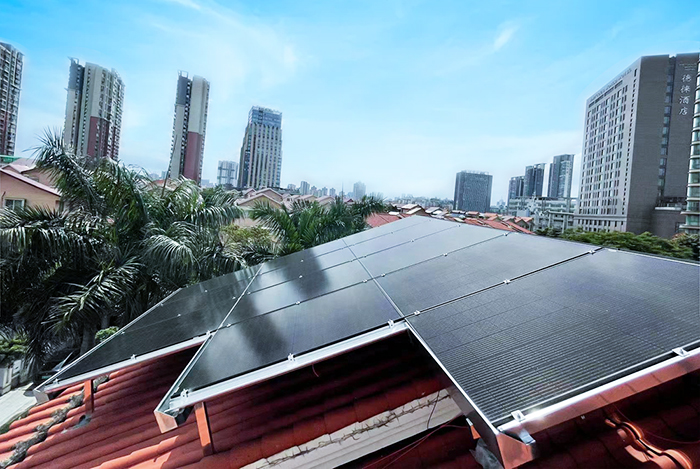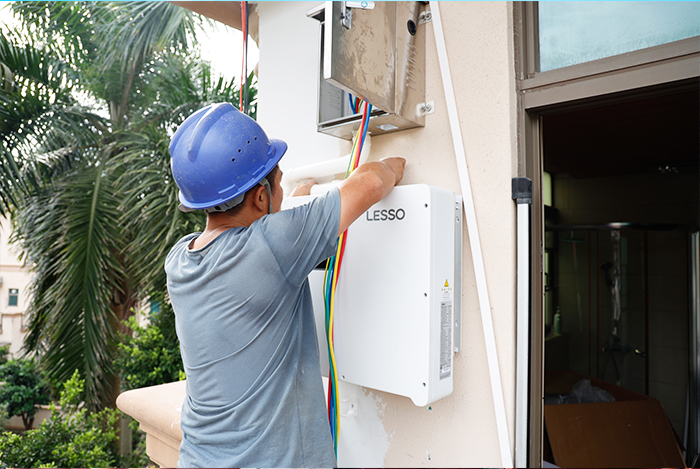As environmental awareness grows and energy structures transform, residential solar PV systems have become increasingly popular. These systems not only help households adopt greener energy but also reduce electricity bills and even generate additional income. So, what exactly is residential solar PV? What’s the installation process? What documents are required for registration? How is the generated electricity managed? Is it classified as a power construction project? Let’s explore these questions in detail.

What is Residential Solar PV?
Residential solar PV refers to photovoltaic systems installed on rooftops or in yards that convert sunlight into electricity for household use or feed into the grid. These systems typically consist of solar panels, inverters, mounting structures, and cables. The solar panels convert sunlight into direct current (DC), while the inverter transforms the DC into alternating current (AC) for household consumption or grid integration.
Installation Process for Residential Solar PV
Installing a residential solar PV system involves several crucial steps to ensure safety and compliance with standards:
1. Consultation and Assessment:
Before installation, consult your local utility company to understand policies, subsidies, and grid connection requirements. Work with a professional PV equipment distributor to evaluate the feasibility and benefits of installing a solar system based on your roof conditions, electricity needs, and budget.
2. On-site Inspection and Design:
A professional team will conduct an on-site inspection to measure roof area, orientation, and tilt. Based on this data, they will design an optimal solar PV system, detailing the layout of solar panels, inverter selection, and cable routing.
3. Contract Signing and Equipment Procurement:
Once the design is confirmed, sign a formal contract with the distributor outlining responsibilities. The distributor will then procure the necessary equipment, including solar panels, inverters, and cables, ensuring that they meet national standards.

4. Installation and Construction:
The installation team will follow the design to securely fix solar panels, connect inverters, and lay cables. All safety protocols must be strictly followed during construction to ensure quality and worker safety.
5. Grid Connection and Testing:
After installation, you need to apply for grid connection with your local utility company. They will inspect the system to ensure it meets grid standards. Once approved, the system will be connected to the grid and undergo testing to ensure proper operation.
6. Maintenance and Operation:
After grid connection, regular maintenance is essential for long-term stability, including cleaning solar panels, checking equipment connections, and monitoring system performance.
Required Documents for Residential Solar PV Registration
After installation, you must complete registration to benefit from government policies and subsidies. Commonly required documents include:
1. Proof of Identification: Valid ID or other proof of ownership for the property where the PV system is installed.
2. Proof of Property Ownership: Documents such as property deeds, land use certificates, or rental agreements to verify legal ownership of the installation site.
3. System Design Plan: A professional design plan detailing the layout, equipment list, and technical specifications of the PV system.
4. Grid Connection Application: A form from the local utility company specifying grid connection details.
5. Other Materials: Some regions may require additional documents, such as roof load-bearing reports, developer agreements, or third-party certification.
Energy Consumption Models for Residential Solar PV
Residential solar PV systems can either feed all generated electricity into the grid or combine self-consumption with grid sales. The two main models are:
1. Full Grid Feed-in:
All generated electricity is fed into the grid, suitable for households with low daytime consumption. The utility company purchases the electricity at a set price, and payment is made periodically.
2. Self-consumption with Surplus Feed-in:
This model uses the generated electricity for household needs, with any surplus fed into the grid. It is ideal for households with higher daytime consumption, allowing savings on electricity bills and generating extra income from surplus energy.
Is Residential Solar PV Considered a Power Construction Project?
There is often confusion about whether residential solar PV is classified as a power construction project. According to regulations, power construction projects typically involve large-scale power generation and transmission facilities built by utility companies. Residential solar PV systems, on the other hand, are privately owned, distributed generation projects designed for personal use and surplus sales, and do not fall under the category of power construction.
While not classified as power construction, residential solar PV installation must still adhere to national safety standards to ensure reliable operation.







